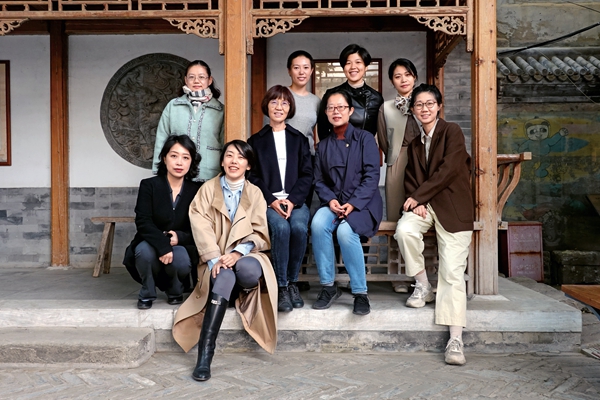
In Beijing's Dongcheng District, a team of young people is committed to the conservation and renovation of hutong areas, and also to improving the living environment of hutong residents. The team is composed of community planners from Beijing Municipal Institute of City Planning and Design, and 62 percent of the team's members are women. In their eyes, every brick and tile in a hutong is a treasure.
A hutong is a type of narrow alley. Hutong, commonly found in northern Chinese cities, are traditionally lined with quadrangle courtyards. Ingrained in the DNA of Beijing's urban development, hutong have existed for centuries.
During the past decade, restoration projects have been undertaken to preserve the original charm of the quadrangle courtyard houses, and efforts to enhance the infrastructure and amenities have improved the quality of life for hutong residents.
Zhao Xing is a community planner, and deputy head of Beijing Planning Exhibition Hall. She fell in love with the profession nearly 10 years ago, while she was helping draft a plan to protect historical and cultural blocks in Beijing's Dongcheng District.
Zhao and the team's other members have worked on the frontlines of community planning, they have gotten involved in the renewal of public spaces in more than 30 quadrangle courtyards, they have promoted the building of more than 20 mini-gardens in residential communities, and they have organized hundreds of science-popularization activities related to city planning and design.
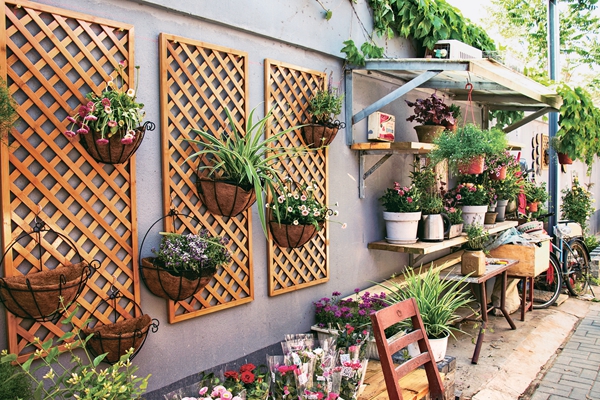
Encouraging Public Participation
Shijia Hutong is the cradle of China's modern education, and the birthplace of Beijing People's Art Theater. In the past, many prominent domestic and international figures in literary circles lived, worked and visited the courtyards there. One quadrangle courtyard, No. 24, became the capital's first hutong-themed museum, Shijia Hutong Museum.
In 2011, Beijing Municipal Institute of City Planning and Design was entrusted by Dongcheng District to draft the plan to protect Dongsi south historical and cultural block. At that time, Zhao visited Shijia Hutong, for the first time, and she became obsessed with its history and traditional courtyards.
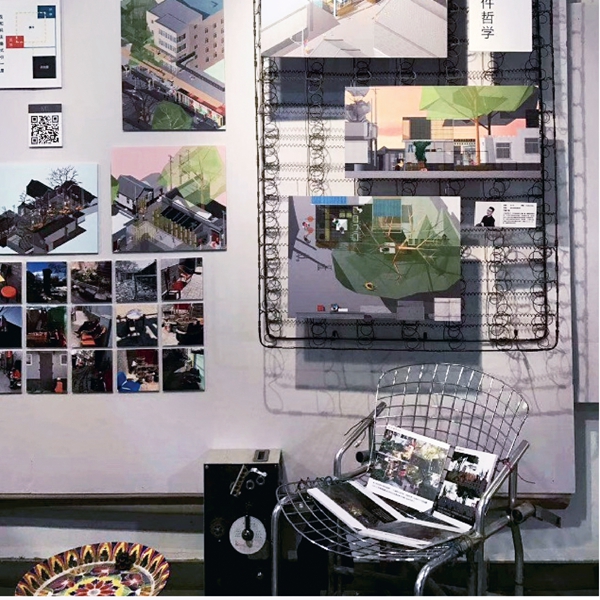
After they finished drafting the plan, Zhao and her team decided to make full use of their professional knowledge to improve the living environment, and to build more public facilities for residents. Their proposals received support from the Chaoyangmen Sub-district Office, so they have since been invited, regularly, to participate in the protection and renewal of Shijia and nearby hutong.
The team realized the importance of getting residents involved in the protection and conservation of traditional courtyards. Therefore, Zhao and her team promoted the establishment of a hutong-protection social association, in Shijia Hutong, composed of residents, administrative agencies and quadrangle courtyard owners.
In addition to being named the association's secretary-general, Zhao became one of the area's responsible community planners.
A growing number of professional planners and designers have gradually joined the association, and they have worked with Zhao to conserve both hutong areas and hutong culture.
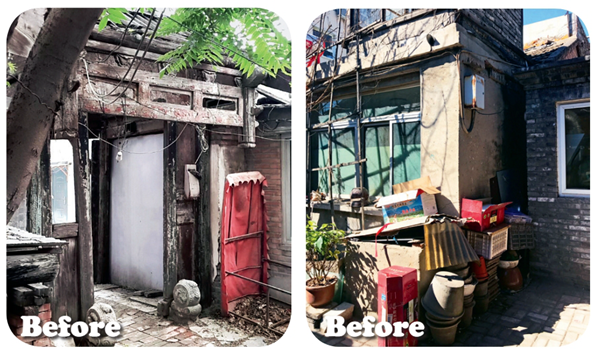
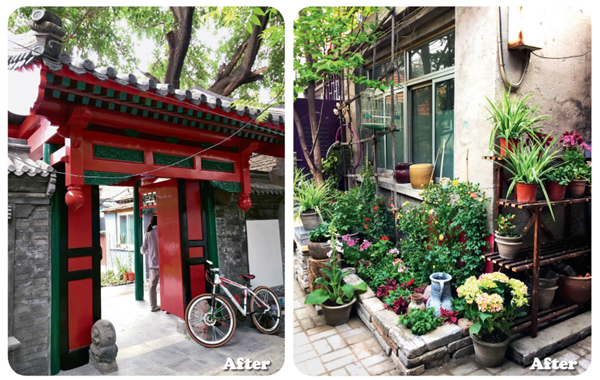
Revitalizing the Hutong
As a responsible planner, Zhao knows how to communicate effectively with residents, and especially how to get them involved in improving the courtyard environment.
Zhao and her colleagues have visited residents, and they have invited the residents to sit down to discuss ways to improve their living environment, and to create more public spaces.
For example, thanks to the team's concerted efforts, an elderly resident, in Yanyue Hutong, agreed to remove an illegal structure, which he had constructed near the courtyard's entrance.
In its place, a chess table, a delightful flower bed and a wheelchair accessible passage were situated. These small changes have resulted in greater convenience to residents, and they have also promoted neighborhood harmony.
Zhao and her team have pooled the strength of residents in the renovation and building of mini-gardens in the courtyards.
Remembering Hutong History
While renovating and rejuvenating hutong, Zhao and her team realized people must be at the center of hutong conservation, and it is of the utmost importance that the team collect precious memories of senior hutong residents as they endeavor to strengthen protection of hutong.
To record hutong history and collect memories of senior hutong residents, Zhao and her colleagues launched an oral-history project. They organized volunteers to visit residents, and to record the residents' stories of hutong life. Then, the Shijia Hutong Museum established an old photo workshop. Residents were encouraged to share their old photos, so the photos could be scanned and displayed during photo exhibitions. The exhibitions have attracted many visitors, especially residents eager to refresh their memories –– through the black-and-white photos –– of old life in the hutong.
Such projects have enhanced people's pleasant memories, and their desire for a better life in the years ahead.
Zhao recalls how a group of elderly residents once organized a classmate-reunion party, at the museum, to mark the 60th anniversary of their graduation from Shijia Primary School. "They shared many childhood memories of life in the hutong. They said the hutong was a child friendly community for them. Inspired by their stories, we organized an exhibition at the museum focused on the dialogue between seniors and children on building a child friendly community," Zhao says.
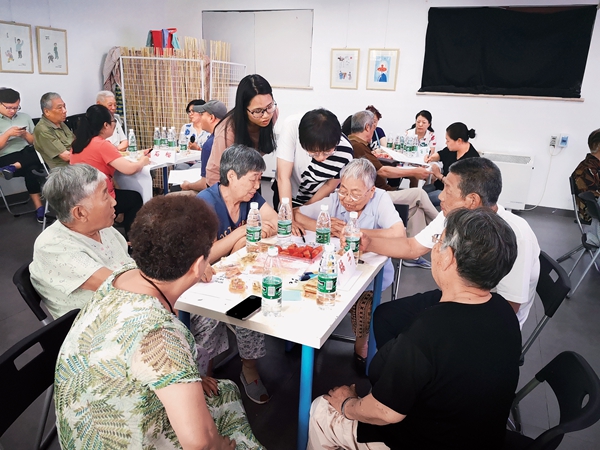 |
| Community planners discuss community conventions with residents. |
Creating a Better Life
More than half of the members of Zhao's team are women, and they have made unique contributions to the conservation of hutong over the years. They have helped run Shijia Hutong Museum, which is now a demonstration place for community cultivation and the protection of old cities. The museum enjoys a high reputation, and it receives more than 120,000 domestic and international visitors every year.
Zhao says the museum is committed to showcasing the cultural charisma of hutong areas in the capital, and also to becoming a platform for residents to get involved in the protection of their neighborhoods, and in the improvement of their living environment.
The museum also strives to bring together social forces, such as college and university students, professional institutions and cultural enthusiasts, to help protect the historical and cultural blocks.
"Residents live more comfortably, the environment of the old city is improved, and the culture is retained. I think this is what community planners should do," Zhao says. "It is our ultimate goal to promote positive changes in the communities, keep up with the pace of development in the new era, and give residents a stronger sense of gain, happiness and security."
Photos from Beijing Municipal Institute of City Planning and Design
(Women of China English Monthly March 2024)